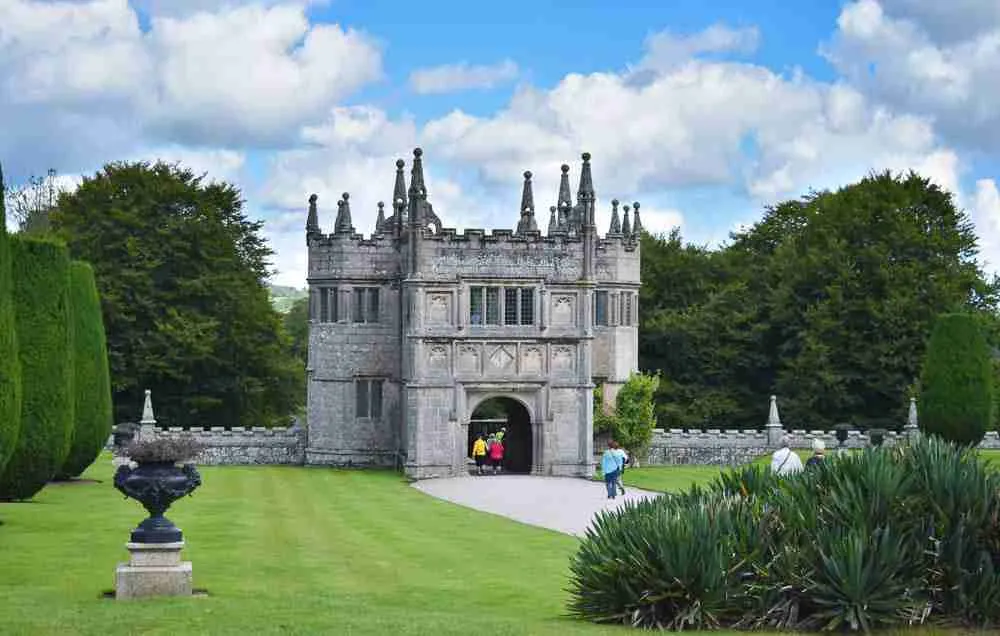Discovering the Charm and History of Lanhydrock House and Gard?

Nestled in the beautiful Cornish countryside, Lanhydrock House and Garden is a magnificent estate that offers a captivating glimpse into Victorian life and history. Managed by the National Trust, this historic house is one of Cornwall’s most beloved attractions, known for its grand architecture, beautifully preserved interiors, and exquisite gardens that stretch over 1,000 acres. Whether you’re a history enthusiast, a nature lover, or simply looking for a peaceful day out, Lanhydrock House and Garden will leave a lasting impression.
In this article, we’ll explore Lanhydrock’s fascinating history, delve into its splendorous gardens, and provide tips on making the most of your visit to this stunning estate.
A Brief History of Lanhydrock House and Garden
The story of Lanhydrock House and Garden dates back to the 17th century. The estate was originally owned by the wealthy Robartes family, who played a significant role in Cornish society. The first iteration of the house was built around 1620 by Sir Richard Robartes, who acquired Lanhydrock as a symbol of his newfound status. The family continued to make additions and improvements over the years, but it wasn’t until a fire in 1881 that the house we see today began to take shape.
The devastating fire destroyed much of the original Jacobean structure, sparing only the north wing and the gatehouse. The Robartes family decided to rebuild the house in a grand Victorian style, creating an elegant and spacious home that remains a remarkable example of 19th-century architecture and design. The rebuilt Lanhydrock became a Victorian paradise, complete with luxurious furnishings, state-of-the-art amenities for the era, and an expanded garden that complemented the house’s splendour.
Today, Lanhydrock House and Garden is a National Trust property, lovingly preserved for visitors to enjoy. The house and its surroundings provide a fascinating window into the lives of the Victorian upper class, making it one of the best places in Cornwall to experience history firsthand.
Exploring the Magnificent Interiors of Lanhydrock House
One of the most captivating aspects of Lanhydrock House and Garden is the house itself. A tour of the interior takes you through more than 50 rooms, each carefully restored to reflect the luxury and lifestyle of the Victorian era.
The Great Hall
The Great Hall is the heart of Lanhydrock House, showcasing exquisite wood panelling and an impressive vaulted ceiling. Visitors are immediately struck by grandeur as they step into this room. The walls are adorned with coats of arms and historical artifacts that tell the story of the Robartes family and their legacy.
The Dining Room
The dining room is a fine example of Victorian style and splendour, with richly decorated walls, elegant furniture, and a long dining table set like a grand feast is about to begin. The room reflects the lavish lifestyle the Robartes family led and gives a sense of the elaborate social gatherings they must have hosted here.
The Kitchen and Servants’ Quarters
Unlike many other historic houses, Lanhydrock House provides a comprehensive look at a Victorian estate’s “upstairs” and “downstairs” life. The kitchen and servants’ quarters offer an intriguing glimpse into the daily routines of the staff who kept the house running smoothly. From the spacious kitchen, filled with copper pots and Victorian cooking equipment, to the servants’ bedrooms, visitors get a sense of the labour-intensive work behind the scenes.
The Family Bedrooms and Private Spaces
The upper floors contain the private spaces of the Robartes family, including beautifully decorated bedrooms, a nursery, and even a schoolroom. Each room tells a story, often accompanied by photographs, documents, and personal belongings that offer insight into the lives and personalities of the family members who once lived here.
Lanhydrock’s Expansive Gardens: A Paradise for Nature Lovers
Beyond the house itself, Lanhydrock House and Garden is famous for its extensive and beautifully landscaped gardens. The estate features formal gardens, parkland, and woodlands that change with the seasons, offering a unique experience for visitors year-round.
The Formal Gardens
The formal gardens at Lanhydrock are meticulously maintained and arranged to complement the house’s grandeur. These gardens are primarily known for their elaborate parterres and box hedging, which create a sense of symmetry and elegance. Visitors can wander among beds of vibrant flowers, neatly trimmed hedges, and ornate stone sculptures, all set against the backdrop of the house.
The gardens come alive in spring with colourful blooms, including rhododendrons, camellias, and magnolias. The explosion of colours is truly breathtaking and draws visitors from far and wide. Summer brings a lush green landscape, while autumn transforms the gardens into a palette of warm reds, oranges, and yellows, making it a photographer’s paradise.
The Woodland Walks
The woodlands surrounding Lanhydrock House are ideal for those who prefer a more natural setting. The estate’s vast parkland is crisscrossed with walking trails that wind through ancient trees, open fields, and alongside the tranquil River Fowey. These paths offer a peaceful escape and are perfect for a stroll or a family outing.
One of the highlights is the Bluebell Wood, which bursts into colour each spring with a carpet of bluebells that stretches as far as the eye can see. Walking through this area feels like stepping into a fairytale, and it’s a favourite spot for visitors looking to capture the beauty of Cornwall’s countryside.
The Victorian Swimming Pool
One of Lanhydrock House and Garden’s more unique features is the Victorian swimming pool, located within the grounds. This historic pool, now empty, offers a glimpse into the recreational life of the Victorian elite. Although it’s no longer in use, the pool is an exciting stop on a tour of the gardens and adds an unexpected detail to the estate’s rich history.
Wildlife and Conservation Efforts
The National Trust takes great care in managing the Lanhydrock House and Garden estate, preserving its historic features and protecting the natural habitats within the grounds. The estate is home to diverse wildlife, including deer, foxes, and various birds. Birdwatchers will find plenty of opportunities to spot native species, especially along the river and wooded areas.
The Trust’s conservation efforts extend to the gardens, where they practice sustainable gardening techniques to promote biodiversity. By using organic methods and protecting native plants, the gardeners at Lanhydrock help ensure that the landscape remains healthy and vibrant for future generations.
Visiting Lanhydrock House and Garden: Tips and Information
If you plan to visit Lanhydrock House and Garden, here are some valuable tips to help you make the most of your day.
Opening Times and Admission
Lanhydrock House is open to visitors most of the year, although specific hours may vary depending on the season. It’s advisable to check the National Trust’s website for up-to-date information on opening times and ticket prices. Admission fees contribute to the preservation of the estate, so your visit helps support ongoing conservation work.
Guided Tours
Guided tours are available for those who want a deeper understanding of Lanhydrock House’s history and features. Knowledgeable guides provide fascinating stories and insights that bring the estate’s past to life, enriching the experience.
Family-Friendly Activities
Lanhydrock House and Garden is a family-friendly destination with activities designed for visitors of all ages. Children can explore the grounds, participate in seasonal treasure hunts, and enjoy the adventure playground located near the car park. Families can also take advantage of the picnic areas to relax and enjoy a meal together in the picturesque surroundings.
Accessibility
The National Trust has made efforts to ensure that Lanhydrock House and Garden are accessible to all visitors. Some areas of the garden have mobility-friendly paths, and manual wheelchairs are available upon request. However, due to the historic nature of the building, some parts of the house may be difficult to access.
Conclusion: Why Lanhydrock House and Garden is a Must-Visit
Lanhydrock House and Garden is more than just a historic estate; it’s a journey into the Victorian era, a botanical haven, and a testament to Cornwall’s rich heritage. From the opulent interiors showcasing the Robartes family’s life to the lush gardens and serene woodlands, Lanhydrock offers something for everyone. It’s a place where history and nature converge, allowing visitors to step back in time while enjoying the beauty of the Cornish landscape.
Whether you’re interested in exploring the history of a grand Victorian estate, enjoying a peaceful walk in nature, or simply soaking up the unique atmosphere of Cornwall, Lanhydrock House and Garden should be on your must-visit list. With its architectural grandeur, historical significance, and natural beauty, this National Trust property provides an unforgettable experience for all who visit.



